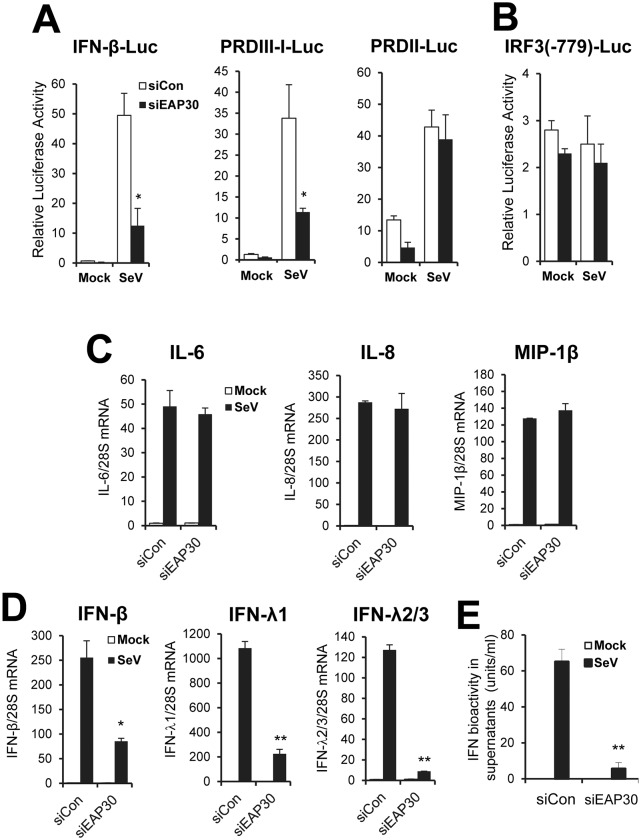Fig 3. The impairment in viral induction of type I and type III IFNs following EAP30 knockdown is attributed to an IRF3-dependent and NF-κB-independent mechanism.
(A) Activation of the IFN-β promoter, IRF3-dependent PRDIII-I element, and NF-κB-dependent PRDII element by SeV in PH5CH8 cells transfected with control (empty bars) or EAP30 (solid bars) siRNA. (B) Activity of the human IRF3 promoter (IRF3(-779)) in PH5CH8 cells transfected with control siRNA (empty bars) or EAP30 siRNA (solid bars), and mock-infected or infected with SeV. (C) qPCR analysis of IL-6, IL-8, and MIP-1β mRNA levels in PH5CH8 cells transfected with control siRNA or EAP30 siRNA, and mock-infected (empty bars)or infected with SeV (solid bars). (D) qPCR analysis of IFN-β, IFN-λ1, and IFN-λ2/3 expression in control siRNA- or EAP30 siRNA-transfected PH5CH8 cells, mock-infected (empty bars)or infected with SeV (solid bars). (E) Production of IFN antiviral activity in culture supernatants of PH5CH8 cells under experimental conditions of (D). “*” and “**” denote statistical differences exist as compared with control siRNA-transfected cells with a P-value of < 0.05 and < 0.01, respectively.

